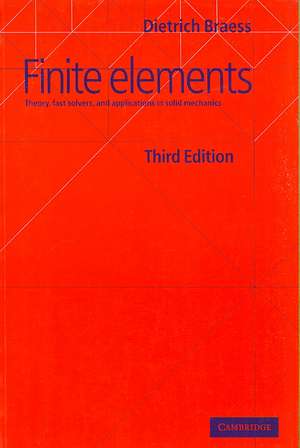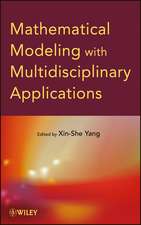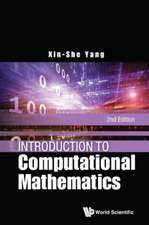Finite Elements: Theory, Fast Solvers, and Applications in Solid Mechanics
Autor Dietrich Braessen Limba Engleză Paperback – 11 apr 2007
Preț: 477.16 lei
Preț vechi: 536.14 lei
-11% Nou
Puncte Express: 716
Preț estimativ în valută:
91.30€ • 95.58$ • 75.55£
91.30€ • 95.58$ • 75.55£
Carte tipărită la comandă
Livrare economică 07-21 aprilie
Preluare comenzi: 021 569.72.76
Specificații
ISBN-13: 9780521705189
ISBN-10: 0521705185
Pagini: 384
Ilustrații: 64 b/w illus. 9 tables 162 exercises
Dimensiuni: 152 x 229 x 22 mm
Greutate: 0.54 kg
Ediția:Revizuită
Editura: Cambridge University Press
Colecția Cambridge University Press
Locul publicării:Cambridge, United Kingdom
ISBN-10: 0521705185
Pagini: 384
Ilustrații: 64 b/w illus. 9 tables 162 exercises
Dimensiuni: 152 x 229 x 22 mm
Greutate: 0.54 kg
Ediția:Revizuită
Editura: Cambridge University Press
Colecția Cambridge University Press
Locul publicării:Cambridge, United Kingdom
Cuprins
Preface to the third English edition; Preface to the first English edition; Preface to the German edition; Notation; 1. Introduction; 2. Conforming finite elements; 3. Nonconforming and other methods; 4. The conjugate gradient method; 5. Multigrid methods; 6. Finite elements in solid mechanics; References; Index.
Recenzii
'This is a well written book on the mathematical foundation of the finite element method which should appeal to graduate mathematicians and researchers in numerical methods and theoretical mechanics. The coverage of the mathematical theories used in the finite element formulation is comprehensive.' A. A. Becker, Journal of Mechanical Engineering Science
'… an excellent book on the subject, with respect to contents, readability as well as presentation … highly recommended.' Michael Schäfer, Zentralblatt für Mathematik
'… has advanced to be one of the most commonly used textbooks in this area.' Monatshefte für Mathematik
'Carefully written and remarkably error-free, Braess's book introduces partial differential equations (PDEs) and methods used to solve them numerically. It introduces PDEs and their classification, covers (briefly) finite-difference methods, and then offers a thorough treatment of finite-element methods, both conforming and nonconforming. After discussing the conjugate gradient method and multigrid methods, Braess concludes with a chapter on finite elements in solid mechanics. The book is written from a theoretical standpoint, and the standard convergence theorems and error estimates are provided and proved. Although a background in differential equations, analysis, and linear algebra is not necessary to read the book, it would be helpful. The level is that of a graduate course in a mathematics department. Practical considerations for coding the various methods are only occasionally discussed. There are exercises at the end of each section varying from two to six problems, about two-thirds of them theoretical in nature. The book can be used as a resource. Extensive and valuable bibliography. Recommended for graduate students.' J. H. Ellison, Grove City College
'… an excellent book on the subject, with respect to contents, readability as well as presentation … highly recommended.' Michael Schäfer, Zentralblatt für Mathematik
'… has advanced to be one of the most commonly used textbooks in this area.' Monatshefte für Mathematik
'Carefully written and remarkably error-free, Braess's book introduces partial differential equations (PDEs) and methods used to solve them numerically. It introduces PDEs and their classification, covers (briefly) finite-difference methods, and then offers a thorough treatment of finite-element methods, both conforming and nonconforming. After discussing the conjugate gradient method and multigrid methods, Braess concludes with a chapter on finite elements in solid mechanics. The book is written from a theoretical standpoint, and the standard convergence theorems and error estimates are provided and proved. Although a background in differential equations, analysis, and linear algebra is not necessary to read the book, it would be helpful. The level is that of a graduate course in a mathematics department. Practical considerations for coding the various methods are only occasionally discussed. There are exercises at the end of each section varying from two to six problems, about two-thirds of them theoretical in nature. The book can be used as a resource. Extensive and valuable bibliography. Recommended for graduate students.' J. H. Ellison, Grove City College
Notă biografică
Descriere
This thoroughly revised 2007 third edition updates the definitive introduction to finite element methods.












